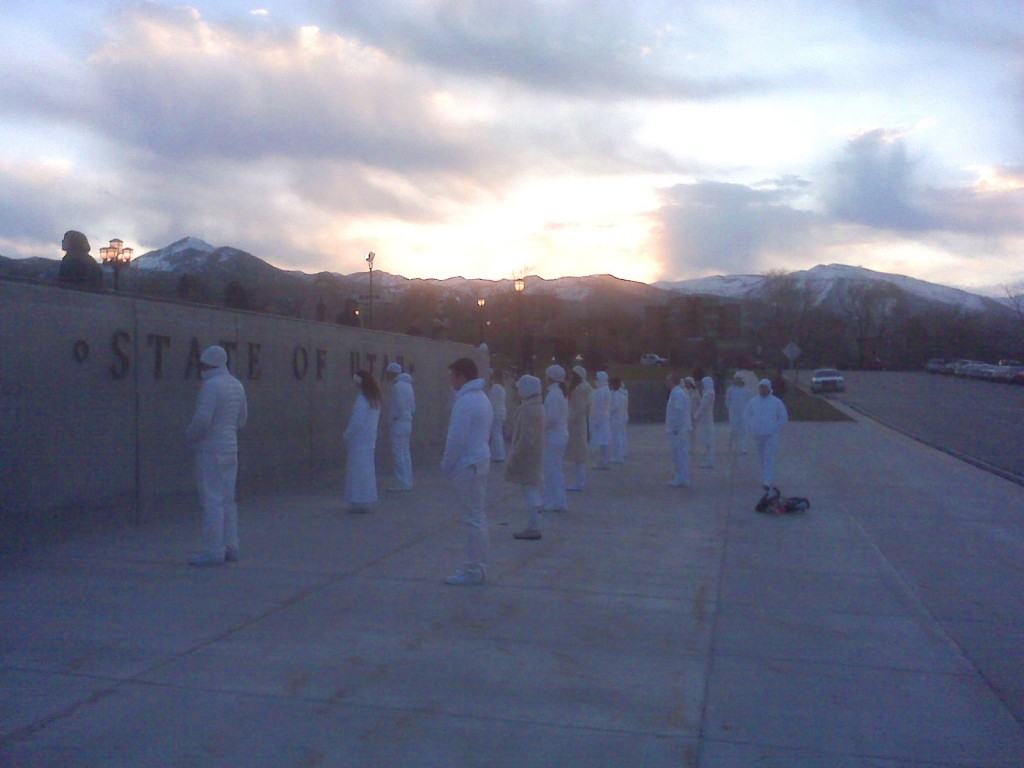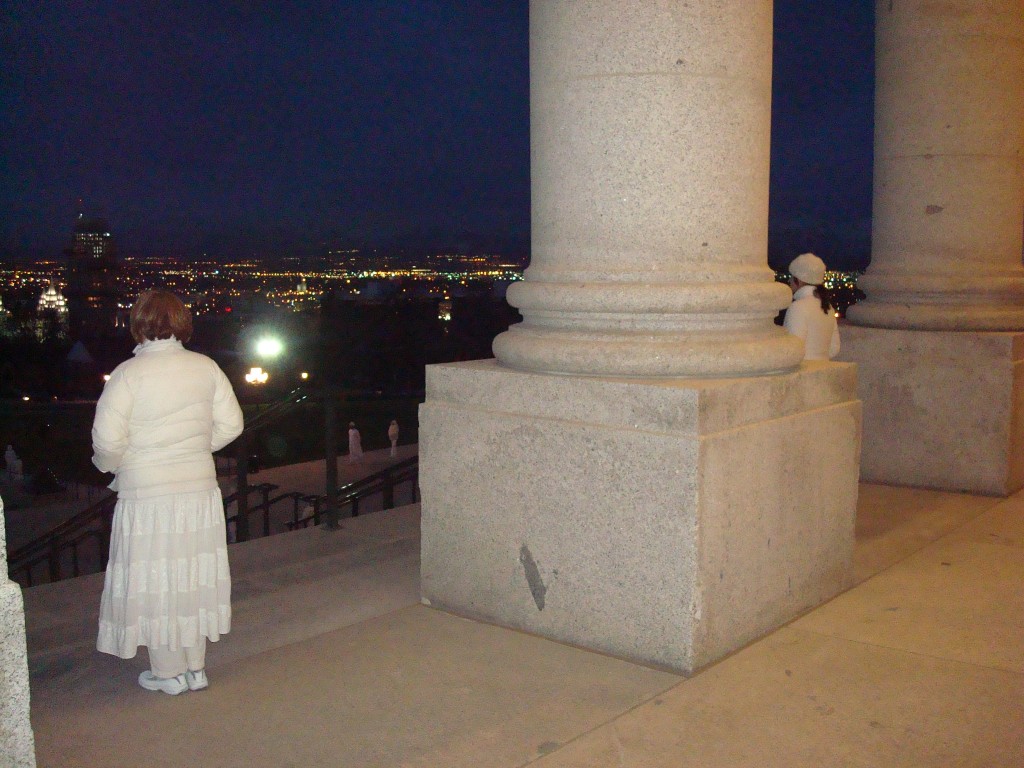 by Mary Cowan
Ernesto Pujol's performance piece "Awaiting" ended Friday morning at 7:15 am. Over 40 participants dressed in white, composed of University of Utah students and artists from Utah, walked for over 12 hours straight on the steps of the Utah State Capitol. The performers walked slowly in a counterclockwise direction on the south stairs. Pujol worked with these volunteers and local artist Rosi Hayes, who compiled the soundtrack for the event, to create his event.
by Mary Cowan
Ernesto Pujol's performance piece "Awaiting" ended Friday morning at 7:15 am. Over 40 participants dressed in white, composed of University of Utah students and artists from Utah, walked for over 12 hours straight on the steps of the Utah State Capitol. The performers walked slowly in a counterclockwise direction on the south stairs. Pujol worked with these volunteers and local artist Rosi Hayes, who compiled the soundtrack for the event, to create his event.
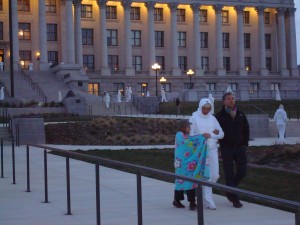 Although the performers were, for the most part, uniform in action and attitude, there were a few interesting deviations. Just before the performance was to end, a woman gained some support through her last half hour of walking by who seemed to be a husband and daughter. One performer picked up a pair of skis and boots he had brought (not part of the performance) and silently left the performance.
Although the performers were, for the most part, uniform in action and attitude, there were a few interesting deviations. Just before the performance was to end, a woman gained some support through her last half hour of walking by who seemed to be a husband and daughter. One performer picked up a pair of skis and boots he had brought (not part of the performance) and silently left the performance. 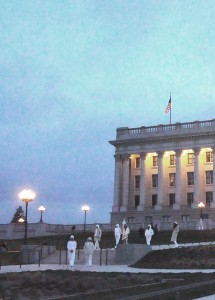 At 7:15 Friday morning, just as the clouds were beginning to turn pink with the sunrise, the performers slowly began to break their walking routine. Silently, these performers who had walked or stood throughout the entire night slowly congregated at the bottom of the steps facing north. All at once the silent walkers turned towards the city and then slowly began trickling back into the world as silently as they came.
In an interview with 15 Bytes, Pujol talked about how time played an important role in the piece. In a world where people expect things to happen instantaneously, and distractions are frequent, Pujol wanted viewers to know that "the first feature of durational performance art is an experience of time on the body of the performer, time on the body of the audience..." This caused viewers to slow down and think about their own experiences with the passage of time. Also, to wonder if it is even possible to be performing the same task for such an extended period of time.
Pujol considers the culture in Utah as a culture of waiting. He says "You toil, but then you wait for that work to somehow be blessed by a mysterious greater force... It is definitely not a passive waiting. It is about a very laborious, missionary, active people and space, but with waiting as its existential backdrop." This piece was a reflection of people continuously working and walking and waiting.
At 7:15 Friday morning, just as the clouds were beginning to turn pink with the sunrise, the performers slowly began to break their walking routine. Silently, these performers who had walked or stood throughout the entire night slowly congregated at the bottom of the steps facing north. All at once the silent walkers turned towards the city and then slowly began trickling back into the world as silently as they came.
In an interview with 15 Bytes, Pujol talked about how time played an important role in the piece. In a world where people expect things to happen instantaneously, and distractions are frequent, Pujol wanted viewers to know that "the first feature of durational performance art is an experience of time on the body of the performer, time on the body of the audience..." This caused viewers to slow down and think about their own experiences with the passage of time. Also, to wonder if it is even possible to be performing the same task for such an extended period of time.
Pujol considers the culture in Utah as a culture of waiting. He says "You toil, but then you wait for that work to somehow be blessed by a mysterious greater force... It is definitely not a passive waiting. It is about a very laborious, missionary, active people and space, but with waiting as its existential backdrop." This piece was a reflection of people continuously working and walking and waiting.
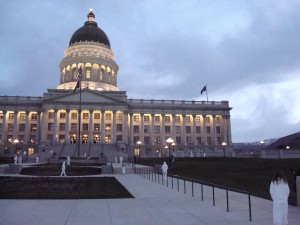 CatalystMagazine.net interviewed Ernesto Pujol to find out his inspiration. "I was struck by the Hill," said the New York based artist, "as a high place in the city, a monochromatic background: the stone and marble and concrete. And as a kind of Jacob's Ladder of yearning—that vision of seeing bodies move up and down between earth and sky. Angelic bodies."
Pujol also gained inspiration from his past experiences as a Trappist monk and with his current practice of Zen Buddhism. The artist is "driven to focus on the persistent human desire for immortality." Creating the performance in an outdoor arena forced the participants and viewers to feel a connection between the earth and the heavens. The silence, the absence of distraction, allows the audience and the viewers to reflect on this connection between the elements and their individual desires for immortality.
Ernesto Pujol and the "Awaiting" performers will meet again at the Utah Museum of Fine Arts Wednesday April 21 from 6-7 pm to discuss the experience in making this piece. Click here to see the UMFA details.
CatalystMagazine.net interviewed Ernesto Pujol to find out his inspiration. "I was struck by the Hill," said the New York based artist, "as a high place in the city, a monochromatic background: the stone and marble and concrete. And as a kind of Jacob's Ladder of yearning—that vision of seeing bodies move up and down between earth and sky. Angelic bodies."
Pujol also gained inspiration from his past experiences as a Trappist monk and with his current practice of Zen Buddhism. The artist is "driven to focus on the persistent human desire for immortality." Creating the performance in an outdoor arena forced the participants and viewers to feel a connection between the earth and the heavens. The silence, the absence of distraction, allows the audience and the viewers to reflect on this connection between the elements and their individual desires for immortality.
Ernesto Pujol and the "Awaiting" performers will meet again at the Utah Museum of Fine Arts Wednesday April 21 from 6-7 pm to discuss the experience in making this piece. Click here to see the UMFA details.
For more about Ernesto Pujol visit: http://www.ernestopujol.org
To see video: http://www.youtube.com/watch?v=6i-npj7cgGI
